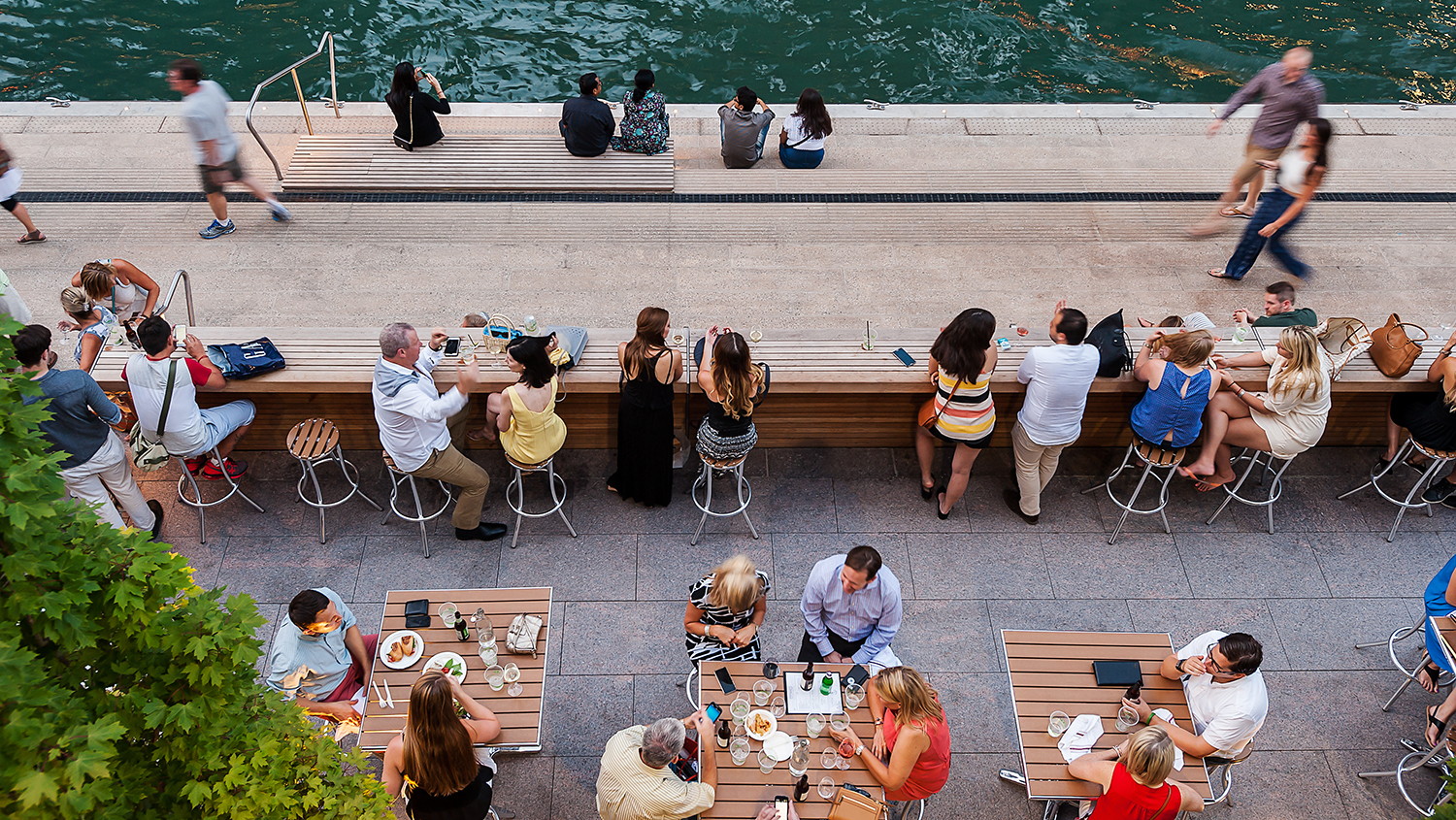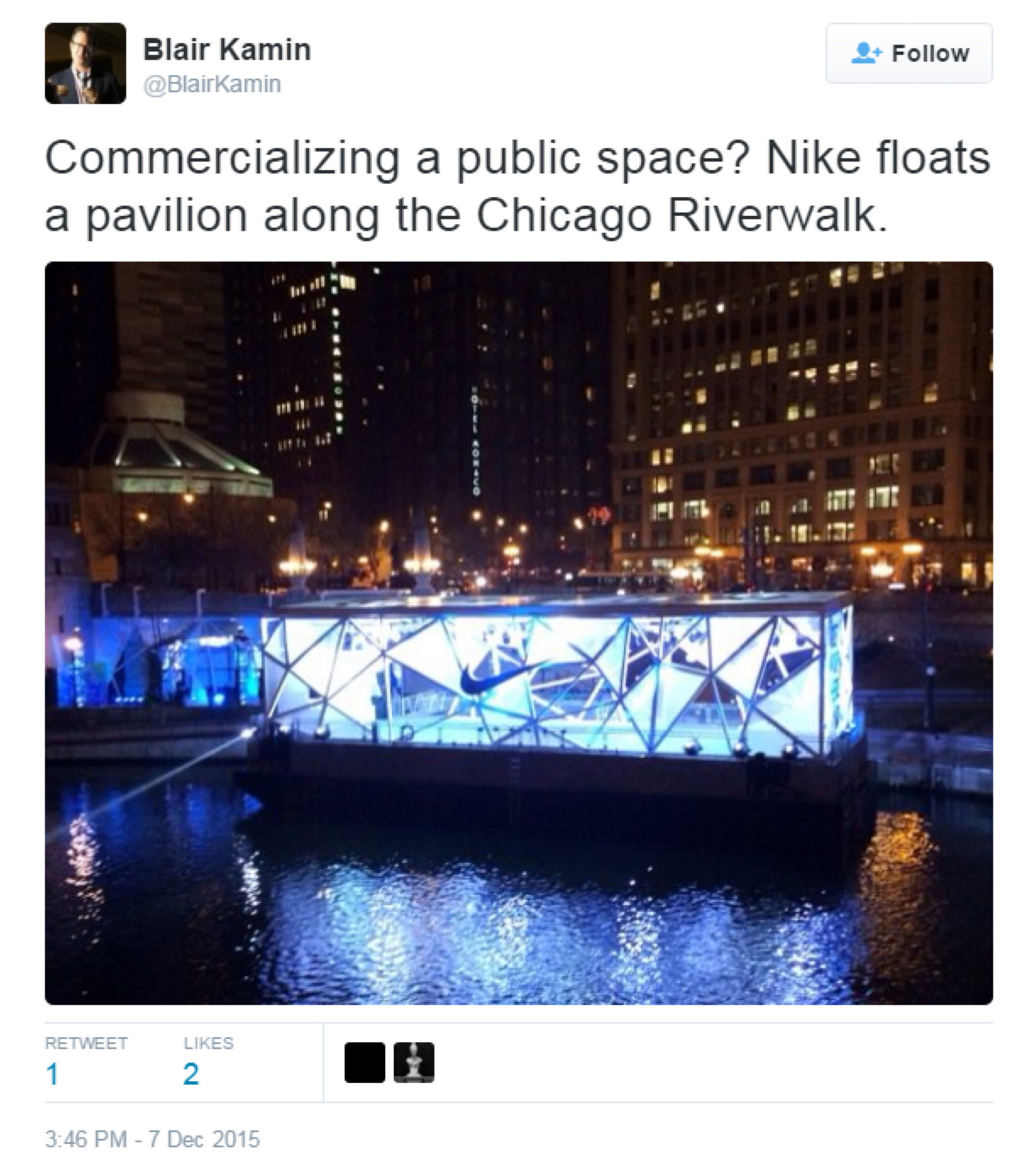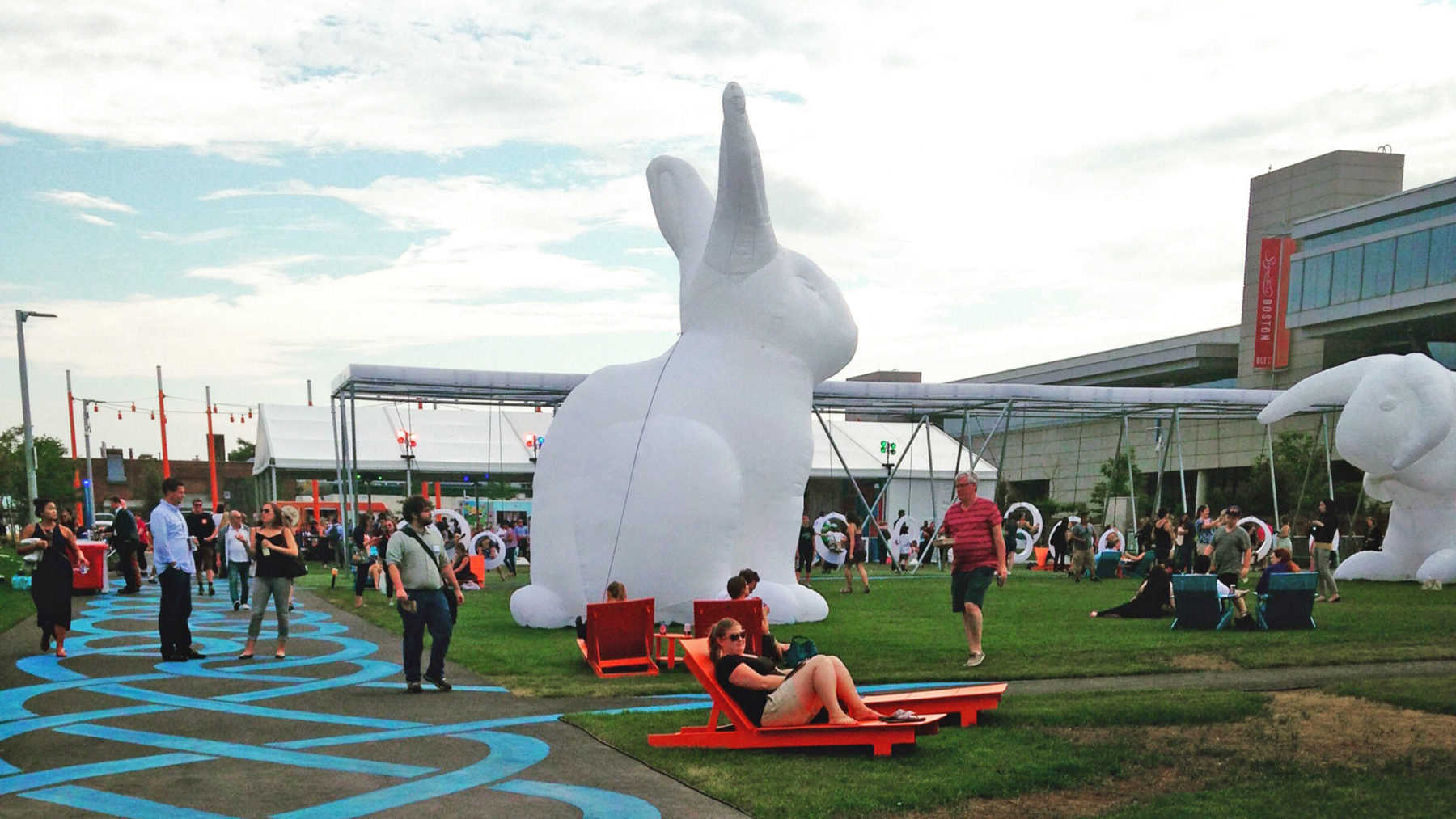齐德尔开发区:扩展波特兰的滨河公共空间
Revitalizing one of the last undeveloped sites along the Willamette River to return it to Portland's public
 Sasaki
Sasaki

Last month, the Massachusetts Convention Center Authority (MCCA) announced that The Lawn on D will open in 2016 for its third season. Built as a temporary park space with an initial expected life span of about 18 months, The Lawn has been immensely popular—even though reports show it to be operating at a deficit. The MCCA is exploring several strategies to put The Lawn on track for a self-sustaining model, including offering expanded corporate sponsorship opportunities and constructing a tent space with a focus on event rental.
Meanwhile, Chicagoans—who were just becoming accustomed to the recently completed second phase of the Chicago Riverwalk—encountered a new site by the river last month. Nike floated a barge-turned-workout space alongside the Riverwalk, offering programmed workout sessions for free. Blair Kamin, the Chicago Tribune’s architecture critic, tweeted a picture of the structure, asking “Commercializing a public space?”

Kamin’s point is a valid one. The perception of what a public space “ought to be” has changed plenty in recent years. Still, for many, the idea of what makes a public space great is informed by the thoughts of Olmsted, Burnham, L’Enfant, and Cleveland—the revered planners who, in designing some of our nation’s finest parks and public spaces, also advanced the democratic belief that all people deserve to experience nature and spaces that transports them outside of the hustle and bustle of city life. With this notion of equal access in mind, apprehension in the face of private dollars shaping the atmosphere of public spaces is understandable.
But it is also important to consider some differences between Olmsted and Burnham’s time and now. Studies show that, for the first time in history, the majority of the world’s population lives in urban areas. As the average city apartment’s footprint is significantly smaller than those found in suburbia, city’s public spaces increasingly serve as an expansion of one’s apartment. The city, in essence, becomes one giant shared front yard. The importance of public spaces was driven home in our recent State of the City Experience report, which shows that of 1,000 surveyed city-dwellers, 65% reported that their favorite experience in a city was either in a park or on the street. As public space is embraced as a source of civic pride, the expectations placed upon the stewards of these spaces goes up. Parks departments are increasingly expected to provide active programming for events like yoga, family movie nights, etc. “Moving programs to the outdoors provides greater accessibility to recreation programs and activities that urban residents otherwise would not have the opportunity to attend, says Barbara Heller, Sasaki’s Director of Parks Planning. “These programs result in a merging of all types of people, varied ages, ethnic groups, and income levels.”

Chicagoans relax along the Riverwalk
These expectations come at a time when, across the nation, parks departments are making do with either decreased or stagnant budgets, meaning that allocating funds for active programming and other initiatives saps funds from already-strapped budgets. Working against this deficit demonstrates a disconnect between the expected and the practical, says Sasaki Principal Gina Ford, ASLA, who comments that “in an ideal world, our collective priorities would align and we would fund our park systems consistent with the value they bring to our lives and robustly enough to enable vibrant programming and sustainable maintenance.”
Cities are learning as quick as they can in reaction to these changing perspectives, and some are doing a great job. The Lawn on D, which is technically a public-private partnership under the purview of the MCCA, will incorporate more events into their programming schedule, bringing revenue, while, as in previous years weekends “will be free to the public, in an effort to offer what the agency calls ‘a community amenity’,” writes Jon Chesto in a recent Boston Globe article. The Chicago Riverwalk, which has been well-received by critics and the public alike, was funded through a significant loan made possible by the Transportation Infrastructure Finance and Innovation Act (TIFIA). “In the absence of the necessary operations and maintenance budgets,” says Ford,” those that manage our parks can choose to let these spaces lay fallow or seek creative partnerships and revenue streams to enhance and enliven them. The Nike barge does all of this while also increasing the visibility of an incredible natural resource—the Chicago River!”
Concerns over the influence of private investment in public spaces are not limited to urban contexts. In “Our Pampered Wilderness,” a New York Times editorial from last year, Christopher Solomon laments the increase of “glamping”—that is, “glamorous camping”—at state parks. Solomon sees the luxury camping trend, and the $200+ a night price tag associated with it, as “segregating people based on bank balance.” These are valid concerns, yet Solomon cites decreased budgets as the impetus for parks implementing resort-like features. Through charging top dollar for these amenities, parks are, in essence, able to subsidize other operations of the park, such as maintaining traditional camping sites and infrastructure. Additionally, Heller sees glamping as a means of expanding patron base, commenting that “providing resort-like features for camping resonates with me personally as I would not be inclined to camp, but I would be interested in glamping. This trend should result in a new audience of potential park users in addition to those who like more primitive types of camping.”

Giant inflatable bunnies adorn The Lawn on D
In a Boston Globe editorial, “Saving The Lawn on D,” Renee Loth cautions that the MCCA “needs to calibrate the tipping point after which the space ceases to be a public amenity at all. In getting The Lawn on D to pay for itself, will its operators discard what makes it great?” And she’s right. There must be some safeguards to incorporating private interests into public space. In these days of shifting perceptions and expectations of what a public space or park does for its city and people, let alone what qualifies as a “public space,” it should only be expected that the stewards of those spaces explore new business models that not only ensure the continued service to their community, but prepare them for responding to future changes.
Photo of inflatable bunnies courtesy of Marlo Marketing